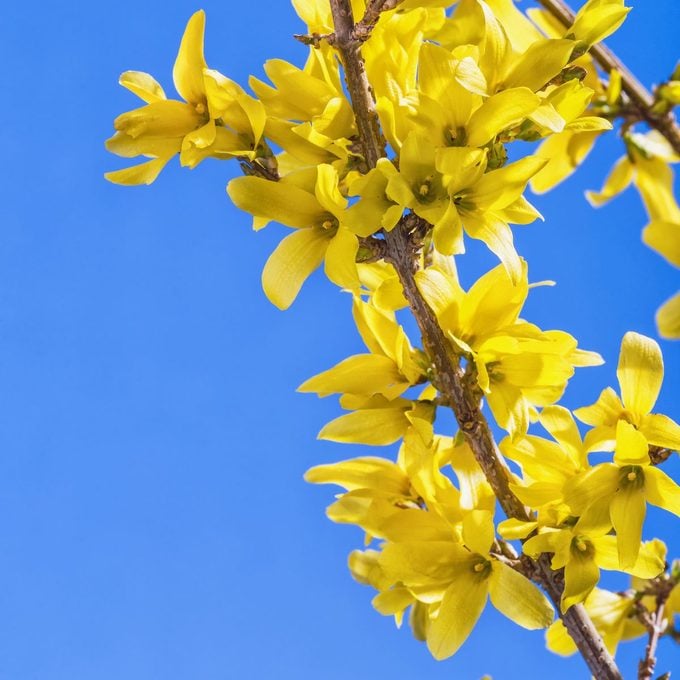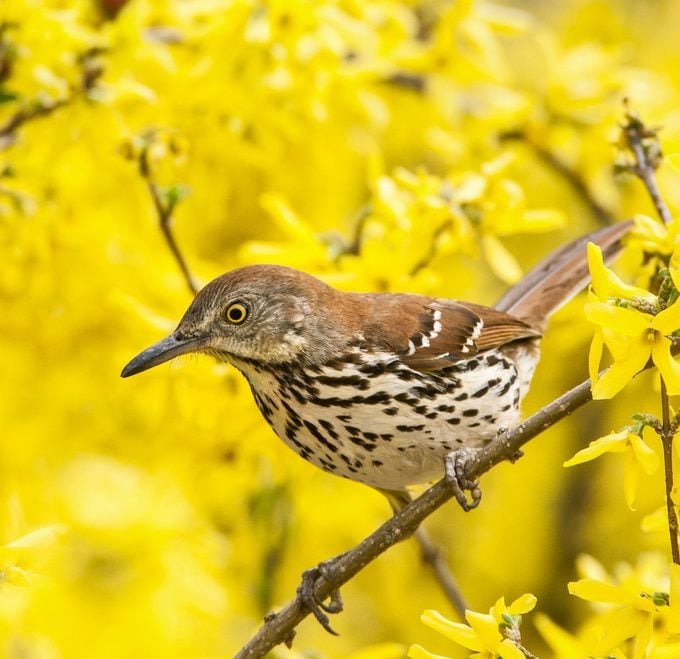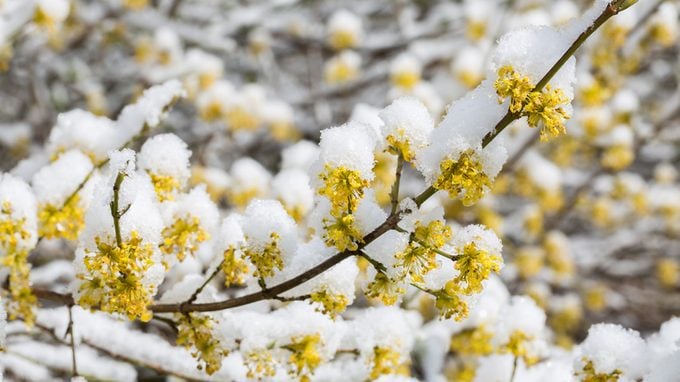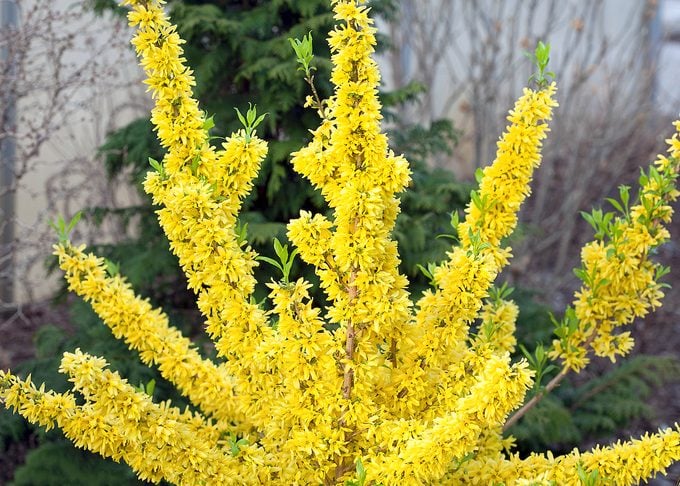How to Grow and Care for a Forsythia Bush
Updated: Feb. 06, 2024
Learn how to pick the best forsythia bush for your region, when the bright yellow flowers bloom, and why your forsythia is not blooming.
On This Page
Forsythia Bush Growing Tips

- Common name: Forsythia
- Scientific name: Forsythia spp.
- Zones: 4 to 8
- Light needs: Full sun
- Size: 8 to 10 feet high; dwarf varieties are available
- Grown for: Sunny yellow flowers
- Foliage: Dark green leaves
When a forsythia bush (Forsythia spp.) blooms, it’s a sure sign that warmer weather is on the way. Forsythia is one of the earliest bushes to bloom in spring, making its bell-shaped golden flowers a welcome sight.
Forsythia is a fast-growing, large shrub that thrives in Zones 4 to 8. (Here’s how to find your plant zone). It will grow to be 8 to 10 feet high, though there are dwarf varieties available and it can be pruned for size. Give this plant a try as a hedge that’ll put on a spectacular show in the spring.
For best results, grow forsythia in well-drained soil with regular moisture and in full sun to part shade.
When Does Forsythia Bloom?
Forsythia can bloom as early as late January or early February in warmer zones. It’ll bloom through late March in colder zones. The sunny yellow blooms last for 10 to 14 days. After the flowers fade, dark green leaves emerge.
Blooms develop in late summer and early fall for the following year, so the shrub should be pruned immediately after flowering in the spring for best results.
Check out the top 10 flowering bushes for your yard.
Forsythia Bird Benefits

Place seed feeders near forsythia and other shrubs so birds can wait their turn for a snack or safely hide from backyard predators.
Check out the top 10 trees and shrubs with berries for birds.
Why Is My Forsythia Bush Not Blooming?

“My forsythia had flowers for the past two years, but only on the bottom of the shrub. What’s wrong with it?” asks Birds & Blooms reader Janet Grosse of Madison, Wisconsin.
Horticultural expert Melinda Myers weighs in: “This is a common problem for those of us growing forsythia in colder climates. Even though the plant tolerates the winter cold, the dormant flower buds that form during the previous summer are often killed.”
Melinda has recommendations for cold-hardy cultivars that’ll thrive in areas with more intense winters: “In the future, select forsythia cultivars, such as Northern Sun, Show Off Starlet, Gold Cluster or Fiesta. They all have hardy flower buds that can withstand colder weather,” she says.
You can try other cultivars to fit your needs, too. Northern Gold is an upright grower and Meadowlark is fast-growing with an arching form. For a cultivar that’ll thrive in warmer climates, opt for Spring Glory.
Forsythia Bush Facts

- Originally called Syringa suspensa, the first identified forsythia species was renamed after Scottish botanist William Forsyth in 1804.
- Ready to make a statement? Meadowlark forsythia can reach up to 10 feet high if unpruned.
- All varieties of forsythia share the same characteristic four petals.
- Forsythia flower buds begin to drop if temperatures hit minus 5 degrees. Look for “flower-bud hardy” types for the most reliable flowering in colder areas.
- There are about 11 species in the Forsythia genus, which falls under the olive family, or Oleaceae. They all hail from Asia except for one from Europe.
- Like lilacs and crabapples, forsythia branches will flower early in a vase indoors—for an average of two weeks—if cut while budding.
Additional reporting by Erica Browne Grivas
Reviewed by horticultural expert Melinda Myers
Why Trust Us
For nearly 30 years, Birds & Blooms, a Trusted Media Brand, has been inspiring readers to have a lifelong love of birding, gardening and nature. We are the #1 bird and garden magazine in North America and a trusted online resource for over 15 million outdoor enthusiasts annually. Our library of thousands of informative articles and how-tos has been written by trusted journalists and fact-checked by bird and garden experts for accuracy. In addition to our staff of experienced gardeners and bird-watchers, we hire individuals who have years of education and hands-on experience with birding, bird feeding, gardening, butterflies, bugs and more. Learn more about Birds & Blooms, our field editor program, and our submission guidelines.




















